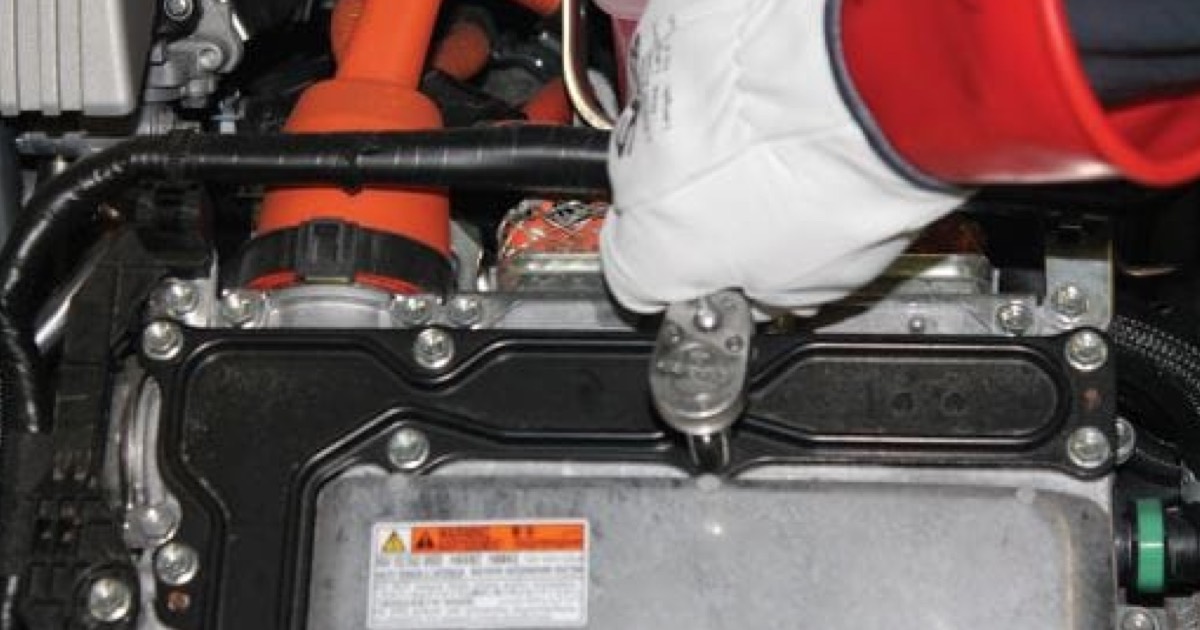With the increasing popularity and availability of hybrid and electric vehicles, it’s almost inevitable that your students will encounter them during their careers as automotive technicians. However, servicing these vehicles can come with its own challenges, especially regarding safety.
Being aware of cautions and hazards is one of the most important skills students can learn. This is true when it comes to safe practices around equipment, preventing serious accidents, and working near electricity. But with the increased hazards of working with hybrid and electric vehicles, what should you focus on to make sure your students can safely deal with them?
Hybrid and Electric Hazards
What are some of the safety hazards that make hybrid and electric vehicles so dangerous to inattentive or untrained students?
Hybrid electric vehicles (HEVs) and battery electric vehicles (BEVs) both currently have systems that range from 100 to 600 volts, which means students who aren’t properly trained or forget to practice proper safety while working risk fatal injuries. Students should remember that 50 volts or more is considered life-threatening and that a higher voltage also means a greater risk.
Another main concern is that hybrid and electric vehicles can start up at any time if they are not fully powered down beforehand, which means the engine could start while a student is working on it. Even if this doesn’t lead to any injuries, it can cause damage to the vehicle. For instance, the engine could be damaged if the vehicle started automatically while the oil was drained.
Make sure your students are fully aware of these hazards before beginning work in the shop and review the procedure for powering down the vehicles. Teach students to keep the key at least 16 feet away from the vehicle during service. Additionally, remind them that the manufacturer’s service information is an important guide for any other safety procedures that should be read before servicing a particular vehicle.
Practicing Situational Awareness
It might seem difficult to train students how to be aware of their actions and surroundings, but one of the most important things instructors can do is teach students about hazards to look out for and which processes they should be aware of while working.
This includes reminding students of tasks they should perform before beginning work, such as
- Making sure the vehicle is in park with the emergency brake on
- Ensuring the vehicle is fully powered down and the key is appropriately stored
- Making note of the work space and choosing the appropriate tools for the job
- Having someone who’s fully trained observe students and be aware of what they are doing
Using the Right Tools
Along with taking extra safety precautions, students should learn all about tools specifically designed for servicing hybrid and electric vehicles. This includes the following standard equipment:
- OEM or equivalent scan tools
- Digital multimeters (DMM) with appropriate high-voltage leads (CAT III or higher)
- High-voltage insulated gloves (rated 5000 volts and certified to 1000 volts) and approved glove covers
- High-voltage insulated shoes
- Insulated tools that meet 1000 V/300 A specifications
Preparing for High-Voltage Risks
In order to work with hybrid and electric vehicles, students will need to have a full understanding of how they operate. Make sure you cover the basic operating differences between models.
Instructors should also spend time in the shop area helping students learn
- How to identify high-voltage areas of the vehicle
- High-voltage wires are usually recognizable by orange convolute or wiring, though some vehicles use other colors, such as blue.
- How to correctly disable the high-voltage system
- Where to find the manufacturer’s service information
- This is needed for tasks like disconnecting the high-voltage battery pack, as each manufacturer is different.
Understanding Additional Risks
Your students should understand that any task related to hybrid and electric vehicles can pose a serious electrical hazard. In fact, high-voltage wires can be located nearly anywhere in the vehicle.
High voltage can be used for multiple accessories, including power steering and air conditioning. Therefore, students should be aware that safety risks do not disappear just because they aren’t working on the main traction motor drive system.
Need some help teaching safety in your automotive course? Check out the newest edition of Fundamentals of Automotive Maintenance and Light Repair, which discusses alternative fuel systems and addresses safety around high-voltage on hybrid and electric vehicles.
